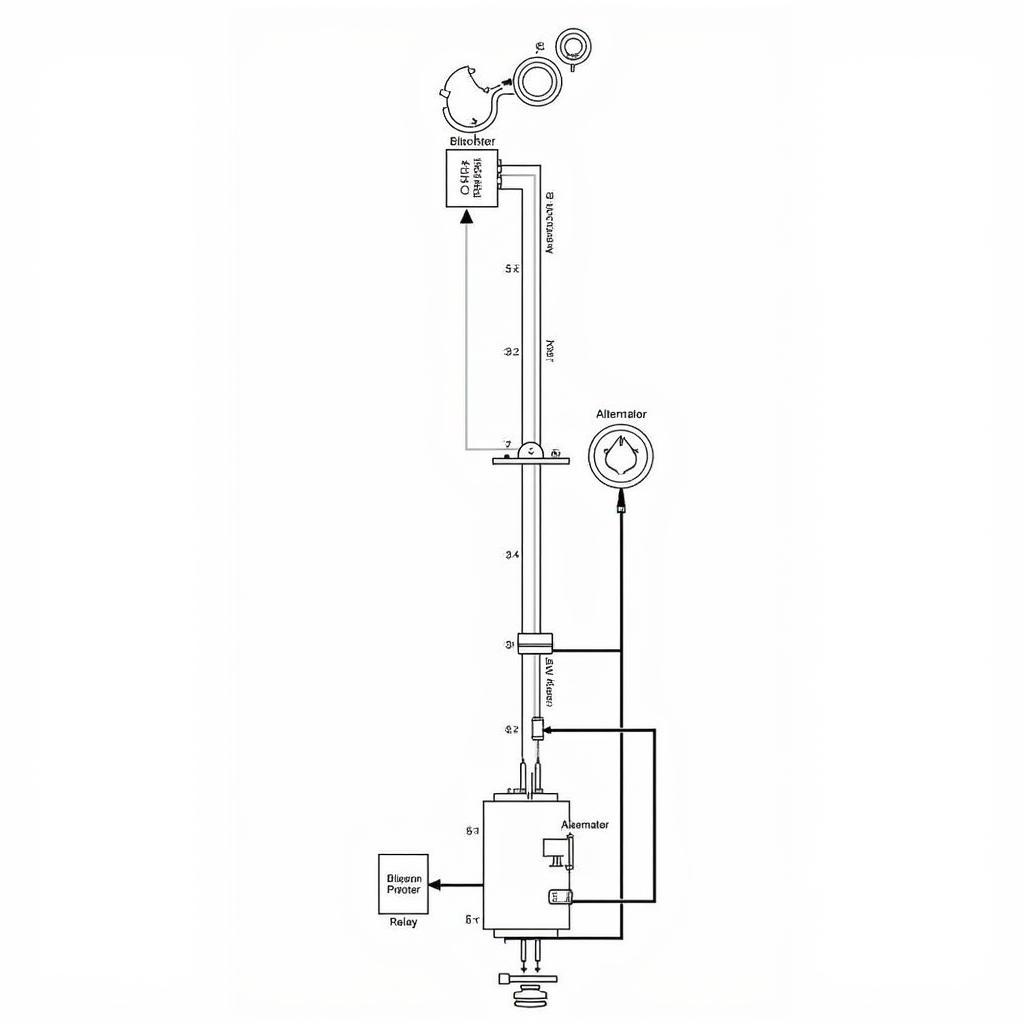Car Circuitry Problems can be a real headache for any car owner. From flickering lights to a complete engine failure, electrical issues can manifest in various ways and identifying the root cause can be challenging. This comprehensive guide will help you understand, diagnose, and potentially fix common car circuitry problems, empowering you to take control of your vehicle’s electrical health.
Understanding Your Car’s Electrical System
Before diving into troubleshooting, it’s helpful to have a basic understanding of how your car’s electrical system works. Think of it as the nervous system of your vehicle, transmitting power and signals to various components. The key players are the battery, alternator, fuses, relays, wiring, and various electronic control units (ECUs). A problem with any of these can lead to car circuitry problems. Did you know that a simple loose connection can cause significant electrical malfunctions?
 Diagram of a Car’s Electrical System: Battery, Alternator, Fuses, Relays, and Wiring
Diagram of a Car’s Electrical System: Battery, Alternator, Fuses, Relays, and Wiring
Common Car Circuitry Problems and Solutions
Diagnosing Starting Issues
One of the most common car circuitry problems is difficulty starting the car. This could be due to a dead battery, a faulty starter motor, or a problem with the ignition switch. Check your battery connections first. Are they clean and tight? If so, try jump-starting the car. If the car starts with a jump, you likely have a battery issue. If not, the problem could lie elsewhere, such as the starter or ignition system. If you’re experiencing problems with your Kenwood stereo after jump starting your car, check out this helpful resource: problems with kenwood car stereo after jump start.
Addressing Lighting Problems
Flickering or dim headlights, taillights, or interior lights can also indicate car circuitry problems. A bad ground connection, a dying alternator, or even a failing bulb can be the culprit. Start by checking the bulbs. If they’re fine, move on to checking the fuses and relays. Sometimes, a simple fuse replacement can solve the problem. More complex issues might involve the wiring harness itself. Ever struggled with your car radio volume knob? This article might help: car radio volume knob problems.
Dealing with Accessory Malfunctions
Power windows, locks, and the radio are all powered by the car’s electrical system. If one or more of these accessories are acting up, you might have a car circuitry problem. This could range from a blown fuse to a faulty motor or switch. Check the relevant fuse first, and then move on to inspecting the switch and wiring for the specific accessory. For issues with Sony car stereos, you might find this link useful: sony car stereo volume control problem.
“A methodical approach is key to diagnosing car circuitry problems,” advises veteran automotive electrician, Robert Miller. “Start with the simple things, like checking fuses and connections, before moving on to more complex components.”
Troubleshooting Electrical Shorts and Overloads
An electrical short or overload can cause significant damage to your car’s electrical system. These issues are often accompanied by the smell of burning plastic or smoke. If you suspect a short or overload, disconnect the battery immediately to prevent further damage. Then, carefully inspect the wiring for any signs of damage, melting, or exposed wires.
“Never underestimate the importance of a good multimeter,” adds Sarah Johnson, another seasoned automotive electrical expert. “It’s an essential tool for any DIYer looking to tackle car circuitry problems.” If you are looking for common car stereo problems, you might find this link helpful:pioneer common problems car stereo. Alternatively, if you are having trouble with your Anki Kourai, this link might help:11133601 anki kourai drive car turning on problems.
Conclusion
Car circuitry problems can be complex, but with a little patience and the right knowledge, you can often pinpoint the issue and even fix it yourself. Remember to always prioritize safety when working with your car’s electrical system. Disconnect the battery before working on any electrical components, and if you’re unsure about anything, don’t hesitate to seek professional help. For more support and assistance, connect with us at AutoTipPro, located at 500 N St Mary’s St, San Antonio, TX 78205, United States or call us at +1 (641) 206-8880.





Leave a Reply